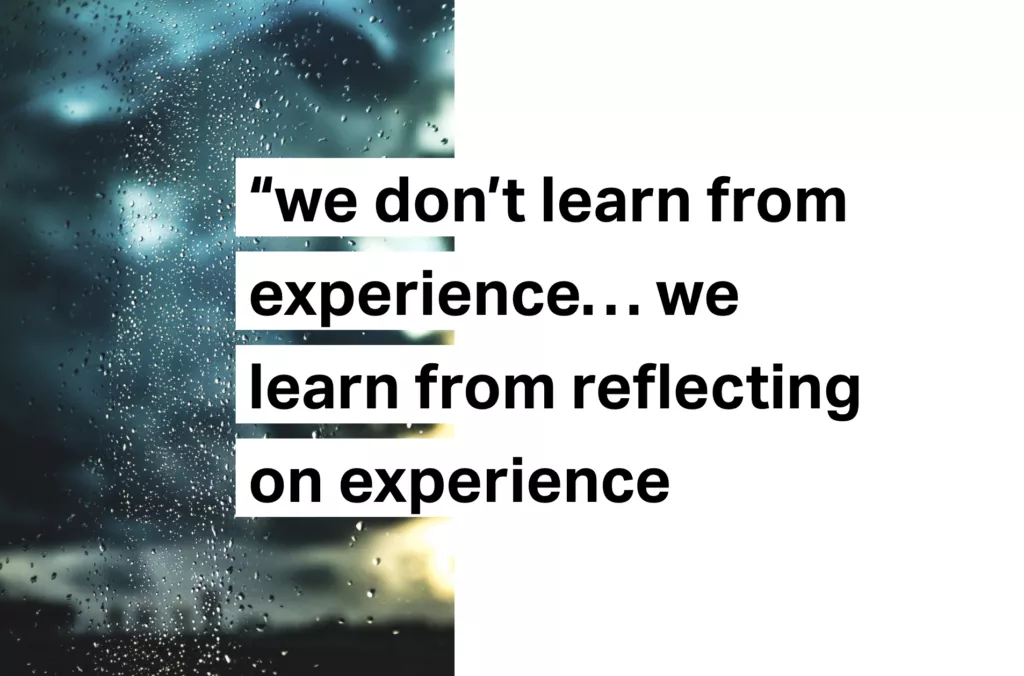The makeSPACE blog
PART 1 OF 2: HOW REFLECTION MAKES SPACE FOR CREATIVE ENGAGEMENT
Why Reflection?
Through reflection on creative experience, learning becomes visible both to the learner and the teacher.

Deeply integrated learning through the arts must include reflective practices that help students link their creative work with content learning and personal development. To facilitate this process, arts-integrated reflective routines are embedded throughout makeSPACE strategies.
According to philosopher, John Dewey, we don’t learn from experience, we learn from reflecting on experience. We all reflect casually on a regular basis, but may not do so deliberately. What exactly is reflection and why is it important? How can we reflect intentionally and effectively?

Reflection is indispensable to learning because it asks a learner to assess their perceptions using evidence and reason. Dewey described reflection as an “active, persistent, and careful consideration of any belief or supposed form of knowledge in the light of the grounds that support it, and further conclusions to which it leads.”
David A. Kolb’s experiential learning cycle frames reflection within a process of continual learning. We reflect on an experience, which results in generalizations or “takeaways.” These takeaways become new understandings that can inform future actions.
Importantly, opportunities to deepen understanding through reflection occur throughout the learning process, not just at the end. For instance, reflection early in the learning process can help learners establish goals toward mastery—what do I want to accomplish and why? Decades of research suggests that developing a mastery orientation toward learning rather than focusing on competition and performance leads to better learning outcomes. Researchers, such as Robert Sternberg, have suggested that developing the reflective capacity of learners may be one of most advantageous and transferable skills available.
MakeSPACE reflective routines apply these theories to creative engagement in and through the arts. In some cases the art form provides a modality for reflecting on any experience. For example, we might ask students to make a gesture that represents their response to today’s reading.
In other cases, the creative process is the ‘experience’ that becomes the focus of reflection. For example, we might ask students to write a 3-sentence artist statement that explains the thinking behind their prototype, including attention to class content and choice of materials. The emotional experience in learning can be a great focus of reflection, as well, providing students deeper understand about how emotions shape our learning. Mary Helen Immordino-Yang’s work illustrates the way that reflection makes us more strategic learners.
Whether focused on academic, creative, or emotional processes in learning, the development of learners’ reflective capacity is an essential, cross-cutting practice in arts integration for creative engagement.
